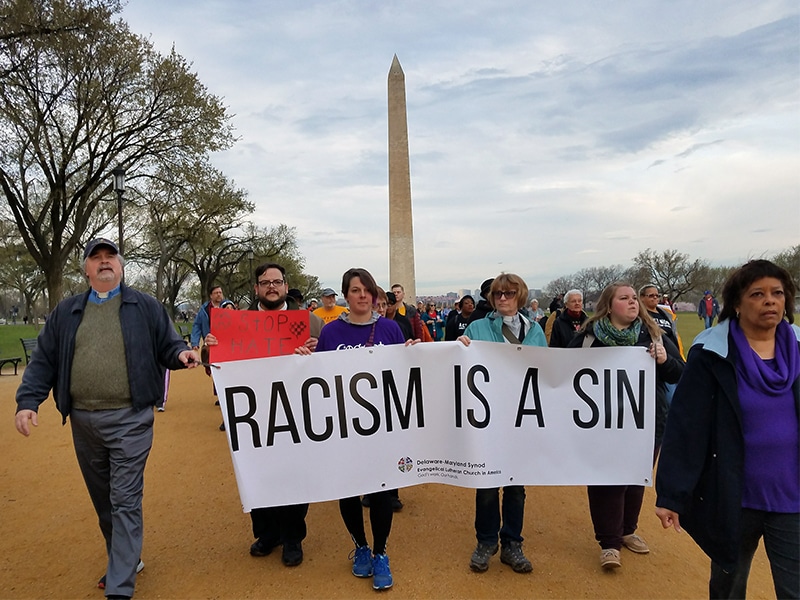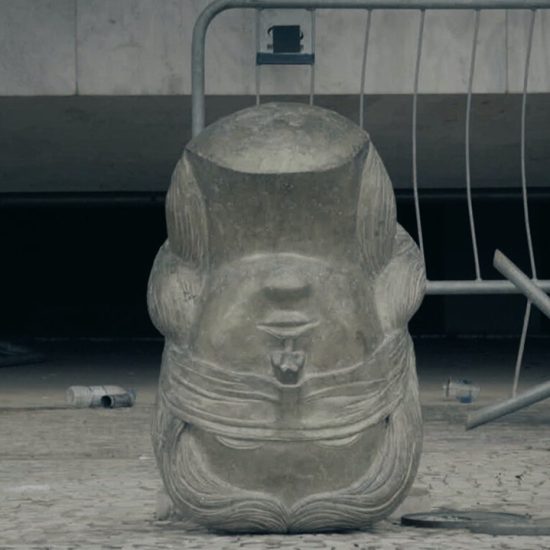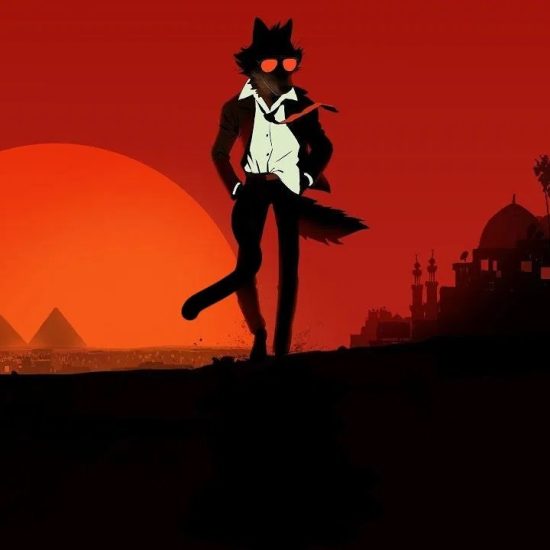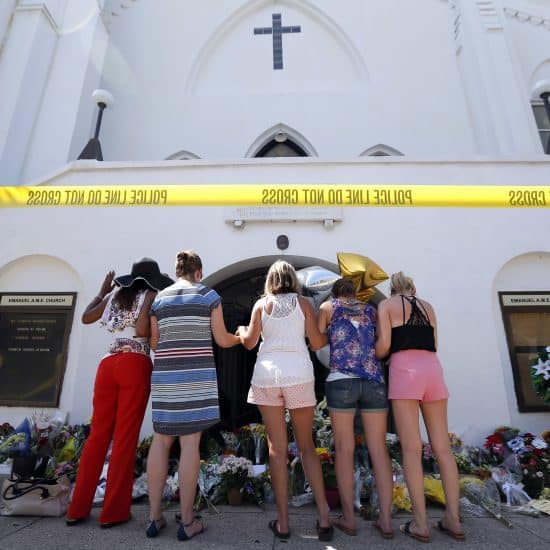
I finally got around to seeing “The Green Book,” and I liked it immensely.
Yes, much of it was cliched and predictable; you could almost smell the plot turns as they were coming around the bend.
But, nevertheless, the movie has something very powerful to teach about race and class in America.

Participants in the A.C.T. to End Racism Rally walk along the National Mall on April, 4, 2018, the 50th anniversary of the assassination of Martin Luther King Jr. RNS photo by Adelle M. Banks
“The Green Book” is the true story of the unlikely friendship that exists between two men. It is almost “Driving Miss Daisy” meets “The Help.”
Don Shirley, played by Mahershala Ali, is a black classical and jazz musician. He dwells in a palatial, museum-like apartment atop Carnegie Hall. He is well-spoken, an aesthete, and well-educated.
He hires a working class, tough-talking bouncer from the Bronx, Tony Vallelonga, played by Viggo Mortensen, to drive him on a tour of the Deep South in 1962.
Dr. Shirley is an elitist. He channels Professor Henry Higgins and tries to teach Tony how to speak with more sophistication. He then plays Cyrano and dictates love letters to Tony’s wife, who is waiting for him, with their extended, loud Italian family, back in the Bronx.
Despite his high culture, Dr. Shirley suffers the daily indignity of racial segregation (there are other things that contribute to his otherness).
Dr. Shirley disdains “typically” black cultural markers — fried chicken and rhythm and blues. When he has to stay in the seedy hotels reserved for blacks in the South (as found in “the green book,” the old AAA of traveling while black), he seems to want to distance himself from the fellow blacks that he finds there.
By contrast: Tony talks like an extra from “The Sopranos.” He has a violent streak. Uncultured, ill-educated, he swears like the proverbial sailor. He is the exact opposite of Dr. Shirley.
How does “The Green Book” teach about race and class?
Consider that moment in the film when a Southern bigot learns that Tony is an Italian-American. He tells Tony that he is “half black.” Tony “goes ballistic” on him.
This scene illustrates a barely remembered historical truth. There was a time when “native” white Americans believed that southern European immigrants, especially Italians and Greeks, were barely white. The same was true of eastern Europeans.
As Eric Goldstein noted, many Italian Americans conceived of themselves in similar terms — as a race apart.
In his heart of hearts, Tony might have understood that.
Tony goes one step further. “I feel closer to the hymies in Second Avenue Deli than I do to these people,” he tells Dr. Shirley.
By “these people,” Tony means not only the racist hooligans that they encounter. He also means the “nice”, “refined” white Southerners who eagerly flock to Dr. Shirley’s concerts, but who insist that he eat elsewhere.
In fact, as Eric Goldstein noted, there was a time in America when Jews were not considered white, either.
And, some Jews did not really believed that they were white as well.
Goldstein reproduces a startling photograph that is almost worth the price of the book.
It is a photo from 1925. It is a group of Jews at a show, sponsored by the Atlanta chapter of Hadassah, and held at the Progressive Club, one of Atlanta Jewry’s elite gathering places.
The photo is of a minstrel show. The Jews are in black face. The caption says, in part: “They [the Jews] frequently embraced black culture as a temporary escape from the pressures of conformity in white America.”
I suddenly remember elderly Southern Jews telling me that there was a very subtle, almost subterranean internal pecking order: the “white Jews” (the ones who were wealthy and who blended in, most likely the German Jews) and the “black Jews” (the ones who did not assimilate to Southern culture).
Wow. Just, wow.
I offer these insights to demonstrate the depth of “The Green Book.” It demonstrates the subtle interplay of class and race in America
There are the white Americans. There are the black Americans.
Somewhere in the middle: ethnic minorities, like Italians and Jews.
It is very difficult to remember that — largely because Jews and other ethnics have done their best to melt into American culture. But, there was a time when that wasn’t so clear.
At a time when we are once again engaged in often heated conversations about Jews, blacks, whiteness, and privilege in America, “The Green Book” makes the nuances of those conversations even more powerful.
During the week of Martin Luther King’s birthday, the conversation is even more urgent, and even more timely.
As I once told a group of black students in my bible class at Columbus State University in Columbus, Georgia: “Anyone who hates you, automatically hates me as well. And, vice versa.
“Hatred is a two-fer.”
At the very least — except when it become a three-fer, and a four-fer…..






